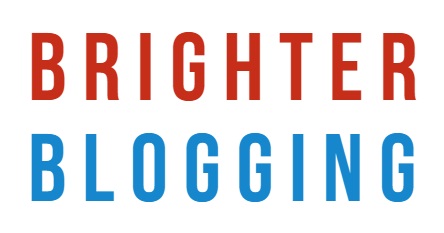How to Start a Blog and Keep it Going – For Free [18 Recommended Tools]

Can you start a blog for free?
Absolutely.
Can you keep it going – month after month – for free?
Yes!
While you’ll have some limitations, if you truly don’t want to pay for anything, you can still run a perfectly good blog. In fact, I’d highly recommend that you spend as little as possible when you’re first setting up your blog. Once you’re making money, you can start upgrading to “pro” or “premium” versions of the tools you’re using.
Nothing in this post will require you to spend anything at all. Quite a few of the tools here offer “pro” or “premium” plans with additional features … but the free versions, in all cases, are more than adequate.
(Note that PayPal and Payhip, which you can use to sell digital products, don’t charge you a penny up front, but will take a small cut of everything you sell.)
Before You Begin… Set Up An Email Address for Free
You’ll need an email address that you can use for your blogging and, ideally, one that will give you easy access to other tools.
If you don’t already have a Gmail address or Google account, then get set up on Gmail. It’s easy to get to grips with, the web interface is fast, and you can easily install use it via an app on your phone or tablet. Your Gmail address automatically gives you a Google account, which you can use to sign into Google’s sites (such as YouTube and Google Drive) but also to sign in to many third-party sites (e.g. I use my Google account for Nozbe, a tool we’ll come on to later).
Free Tools for Setting Up Your Blog
There are a number of blogging platforms you can use completely free of charge.
WordPress is the best known and most popular, and the one that I recommend. Simply go to the WordPress.com website, click Start Your Website, and work through the screens step by step.
Note that you’ll need to use a free URL. WordPress should offer you one: this used to include “wordpress” in the domain, but now it’ll normally include a keyword plus the suffix .blog.
You can also opt to pay for a domain name, which does look a bit more professional, and use that with WordPress. (If you’re stuck on naming your blog, this post might help.)
Tip: If you’re going to spend money on one thing right at the start, pay for web hosting and install the WordPress.org software. It’ll give you more flexibility, and it’ll put you in a great position for the long term. The free WordPress.com version is fine for getting started with, though.
If you want a different option, Blogger is also great (particularly for beginners) and it’s used by a lot of hobbyist bloggers who aren’t looking to make money from their blogging. Your blog will have blogspot in the domain name.
Free Tools for Creating a Mailing List
It’s also a really good idea to establish a mailing list for your blog. This allows readers to get your posts straight to their inbox (you can either mail out the whole of each post, or the title plus a “teaser” of what’s to come) – and also means you can contact your readers if you launch a product or start offering a service.
MailChimp is a great option here: you don’t have to pay anything until your mailing list reaches 2,000 people (by which point you’ll likely have a profitable blog anyway).
If you’ve tried MailChimp and didn’t get on with it, MailerLite is another good option, though it’s only free up to 1,000 subscribers.
Free Tools for Making Notes and Drafting Your Blog Posts
Evernote is a great all-purpose tool for storing and organising notes. I use it for pretty much everything: for my blogs, for holiday plans, for my novels – my notes all get dumped in there. You can use Evernote completely for free, either by logging into the web version, or by installing the app/software on your computer or device.
You can write your posts straight into WordPress, but if you prefer to store your drafts separately, Google Docs is a great free online word-processor. It’s particularly useful if you want to collaborate with other people. I’ve found that it can add some awkward HTML formatting to posts, so you may want to draft them as plain text then copy them into WordPress before adding your formatting.
Free Tools for Editing and Proof-Reading Your Blog Posts
Once you’ve drafted your post, you’ll want to edit it before it goes live. While nothing beats carefully re-reading, there are several automatic editors out there that are well worth a look.
Grammarly is probably the best known, and even at the free level, does a great job of picking up spelling and grammatical errors: it’ll likely catch things that your spell checker will miss. You get extra insights with the paid plan, but for most bloggers, the free version should be fine.
Hemingway Editor is another good one, particularly if you’re trying to adopt a more concise, punchy blogging style.
Free Sources of Images for Your Blog Posts
You’ll need to write your blog posts yourself, but unless you’re a photographer/illustrator/designer, you’ll probably want to source images from elsewhere.
Pixabay is a handy source of free images. It has a wide range of photos (and some illustrations) that you can use without paying anything. You don’t need to cite or link back to the photographer or image creator, either.
Another option is Pexels, which is very similar to Pixabay – I’ve found its search feature trickier to use, though.
Don’t use images that you’ve found via a Google search. They might be protected by copyright – and you could get landed with a hefty fine.
Free Tools for Manipulating Images
If you want to create branded images, graphics, or similar, Canva is a really good online tool for this. The free plan is very functional, although there are some limitations (e.g. you can’t download images with a transparent background).
Paint.NET is a fantastic free program that you can download and use to resize images, improve photographs, and lots more. Just be careful to click the Paint.NET download link rather than one of the many ads on the site.
Free Social Media Tools
All the major social networks themselves (Facebook, Twitter, LinkedIn, etc) are free to sign up for. If you want to promote your blog posts and build a following, though, you may well want to use some tools to help you schedule and manage your social media activity.
Buffer is a great way to queue up posts in advance, and you can use your existing Twitter or Facebook account to sign up. You can use it to post to Twitter, Facebook, Instagram, and/or LinkedIn. (You’ll need a premium subscription if you want to use it for Pinterest, or for more than three social media accounts in total.)
Hootsuite is a dashboard you can use to manage multiple social media accounts in one place. It offers scheduling, like Buffer, but also allows you to view activity in your social media feeds, reply to messages, and so on. The free plan lets you manage up to three accounts.
Free Tools for Staying Focused and Productive
Blogging can take up a lot of time … and it’s very easy to end up distracted from the harder tasks (like writing posts or creating products). Things like social media, commenting on other blogs, reading other blogs, and simply hanging out online can end up eating a huge amount of your blogging time.
RescueTime is a great app (that you can install on your computer and on your phone) which tracks exactly where your time is going. The free version has a lot of useful functionality, and it can be a good way to become more aware of what you’re spending – and perhaps wasting – your time on.
If you need help keeping track of all your tasks, Nobze is a great tool for that. Again, you can use it on both your phone and your computer, and it’s completely free. (You do need to pay if you want more than five project folders, or if you want to be able to use it with a partner or team.)
Free Tools for Making Money from Your Blog
At some stage, you’re likely to want to start making money – this is the point at which you go from simply having a hobby to having a business.
The main tool to get in place here is PayPal, which allows you to receive payments easily (people don’t need to have a PayPal account to pay you). You don’t pay anything to sign up or to send money: instead, PayPal takes a cut of all the money you make.
If you’re going to be selling digital products, Payhip is also free to sign up for – though again, they take a cut of everything you sell. They’ll host your product files, and they’ll handle things like VAT for you (important if you’re in the EU, so you can comply with EU regulations).
There are many truly excellent free tools out there that can help you with every aspect of blogging.
Eventually, there may well come a time when you do want to invest in premium versions of tools in order to grow your blog and your business and bring in more revenue.
Until the point at which your blog is making money, though, you can run it completely free using the tools above. (And if you’re running a blog that’s more of a personal or hobby site, you might never need to pay a penny for it.)
I’d love to hear about your favourite free tools for blogging: just share the ones you’d recommend in the comments below.
